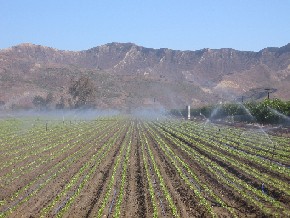From UC Davis via Morning Ag Clips
A new book shows why California has led the nation in farm sales since 1948 and explores future challenges.
California Agriculture: Dimensions and Issues , by the Giannini Foundation of Agricultural Economics, details the past, present, and future of many of California’s major agricultural commodities, including grapes, tree fruits and nuts, vegetable crops, dairy, livestock, nursery and floral production, and cannabis. The new 18-chapter book, written by agricultural economists at UC Davis, UC Berkeley, and UC Riverside, addresses issues such as labor, water, climate, and trade that affect all of California agriculture.
“California agriculture overcame many obstacles to become the nation’s number one farm state. Leading agricultural economists are generally optimistic that California agriculture will continue to thrive in the 21st century, despite continuing large challenges,” said Phil Martin, UC Davis Emeritus Professor of Agricultural and Resource economics, who is co-editor of the new publication.
For over 70 years, California has led the nation in farm sales due to its specialization in high-value commodities, such as fruits, nuts, vegetables, and other horticultural crops. The book uses the most recent Census of Agriculture data to show that, of the $64 billion of these crops produced in the U.S. in 2017, California produced nearly half by value ($31 billion).
More than 44 percent of California’s $50 billion in farm sales in 2017 were fruits and nuts, with 17 percent of sales from vegetables and melons, and 14 percent from nursery and other horticultural specialties crops. Many of these high-value specialty crops are also very labor-intensive and face challenges from increased cost and decreased availability of agricultural labor. The book discusses how California growers effectively responded to these labor challenges by adopting labor-saving mechanization. California remains competitive with producers elsewhere by relying on superior plant varieties, integrated pest management, and improved irrigation methods that increase both the quantity and quality of California agricultural commodities.
Water, climate, and trade pose challenges and opportunities for California agriculture. In the last decade, water scarcity and decreased water quality, along with regulations to address these issues like the Sustainable Groundwater Management Act, have prompted farmers to use scarce water to irrigate more valuable crops, as with the switch from cotton to almonds. Increased regulations and the increasing scarcity of water affect high-value specialty crops as well as the dairy and livestock industries that accounted for 24% of California farm sales in 2017.
Climate variability, including drought and heat stress, affects farm worker welfare, crop yields, and dairy productivity. Retaliatory tariffs resulting from the 2018 trade war reduced U.S. agricultural exports to China by close to $14.4 billion per year, as exports of dairy, livestock, and specialty crops fell.
California agriculture has a rich history of overcoming challenges by pursuing innovative research, adopting new technologies, and adapting to changing conditions. Learning how California agriculture has succeeded in the past suggests that the state can maintain its dominant role as an agricultural producer in the future.



